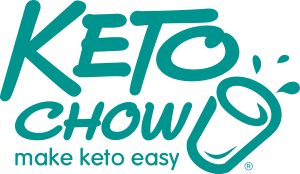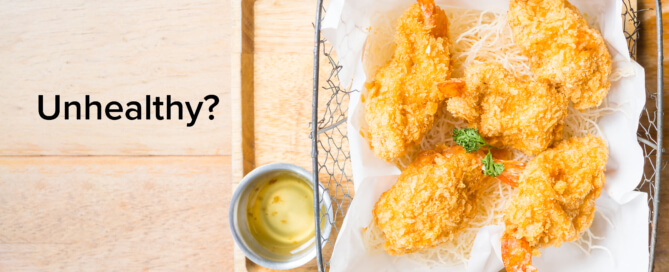Can you still eat fried foods on keto?
Fried foods are delicious and almost everyone loves them, but they have a reputation for being unhealthy. That reputation is based on the fear of fat and a history of fried foods being made as cheaply as possible in places like chain restaurants, street fairs, and carnivals. The great news from a keto perspective is that fat is our friend, so the only reason to fear fried foods is poor quality, overused oils, and cheap ingredients that are high in carbs and low in nutritional value.
Many cuisines contain fried foods that are wholesome, delicious, and a treasured part of the food culture, without negative associations or fear of fat. The simplest way to ensure the quality of the fried foods you eat is to fry your own. Frying at home means having complete control over the quality of the fried foods you consume and is well worth a little extra effort.
What is deep fat frying? Deep fat frying and pan frying are often discussed interchangeably but they are two different cooking techniques. Deep frying means to cook a food completely submerged in hot fat. When properly done, deep fat frying results in a crisp, crunchy exterior and a juicy, tender, flavorful interior. Pan frying or shallow frying refers to cooking a food in an inch or two of hot fat in a frypan. Pan frying works well for more delicate foods, like fish filets. Pan frying results in a lightly crisp product.
Deep frying takes a bit more finesse so here are some tips on becoming a fry master at home, so you can make delicious keto friendly fried goods to make any occasion special.
- Equipment: If you fry often you may want to invest in a countertop deep fat fryer, but all you need to start frying is a deep, heavy pot such as a Dutch oven, a deep fry (or candy) thermometer, an instant read thermometer to check the internal temperature of meats, a slotted spoon or skimmer to remove cooked food and skim the oil, and a rack for draining and cooling fried foods.
- Fat: Rendered animal fats like beef tallow, lard, goose fat, and duck fat work beautifully for frying. Refined coconut oil and avocado oil also work well. Mixing a more expensive fat like duck fat with a neutral fat like refined coconut oil can help stretch the more expensive fat. Choose fats and oils that are stable at high heat (a high smoke point) and have been naturally rendered or refined so they are free of solids that would burn while frying.
- Three-pan breading system: Coating foods in three layers, starting with a dry layer, then an egg wash, then a thick coating. Traditionally, flour and breadcrumbs are used but Keto Chow Savory Chicken Soup can make a great layer, then seasoned egg wash, and then a coating of ground pork rinds, or coconut flour mixed with grated parmesan cheese works well for the crumb layer. Allowing the “breaded” food to dry on a rack in the refrigerator for at least 30 minutes will help the coating adhere to the food and give the best results for frying.
- Foods to fry: Chicken wings and skin-on chicken can be fried without any coating at all. Meats, seafood, cheeses, and vegetables can be coated in the three-pan process or in just a single layer of coating depending on the ingredients. Experiment to see what works best for you.
How to fry:
- Dry foods thoroughly and shake off remove excess breading before frying. Water and food particles break down the oil and can cause hot grease to foam and spit.
- Season the outside of foods after they are fried as salt and seasonings can break down cooking oil quickly.
- Assemble all your equipment and the food you plan to fry. Heat the fat and bring it to temperature. Most foods are fried at 350℉ to 375℉. Frying at a low temperature can cause foods to become greasy and soggy. Frying at too high a temperature can cause the outside to burn before the inside is cooked through.
- When the fat reaches the desired temperature, carefully lower the food into the hot oil with tongs, a slotted spoon, or a basket by bringing it to the surface and lowering it in gently. Don’t attempt to drop food into the oil from above which will cause the hot oil to splash.
- Don’t overload the pan or fryer. Too much food in the oil at once will bring the temperature of the oil down. Keep an eye on the thermometer; if the temperature drops more than 25 degrees and stays low, you have added too much food to the fryer at once.
- Use fresh fat for frying. Discard fat that is brown, has a strong smell, or has become viscous. It won’t fry properly and will destroy the quality of the food fried in it.
Follow these guidelines, experiment, and have fun and soon you’ll be frying delectable foods with ease.
A word about kitchen safety: There is no reason not to fry at home, but every home cook should have a first aid kit and a portable fire extinguisher appropriate for grease fires on hand in case of emergency. Regulating the temperature of hot fat, using stable fats, and following the recommended guidelines for frying are good ways to stay safe, but being prepared for the unexpected is part of being a smart cook. If you don’t have a fire extinguisher available, covering the pot of grease with a tight-fitting lid to cut off the oxygen to the fire is the next best choice. For small fires, baking soda poured directly on the flames can smother the fire. Never use water to put out a grease fire—it will only spread the fire. Don’t try to smother the fire with a towel or fabric as these can easily catch on fire and burn you too. When in doubt, get away from the fire and call for help from a safe place.








